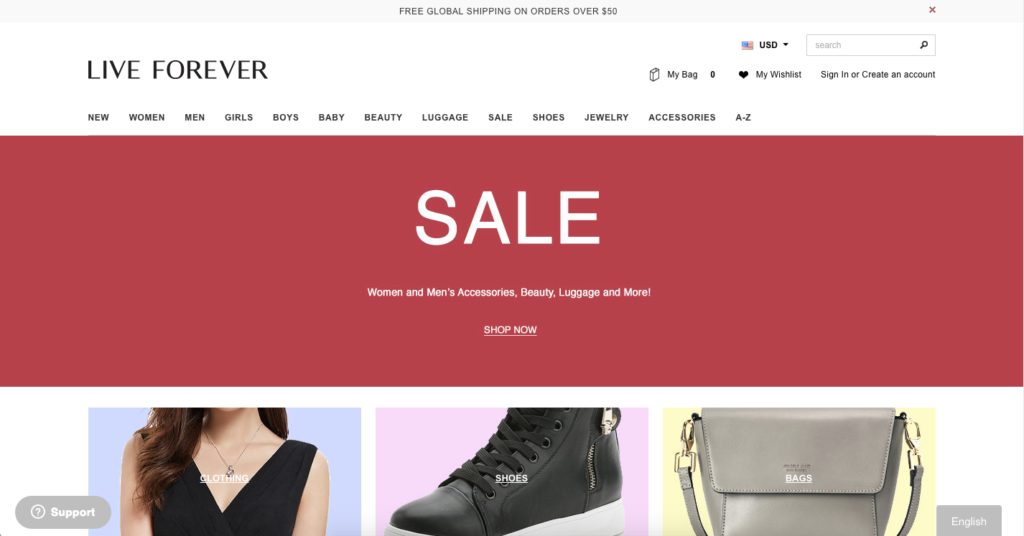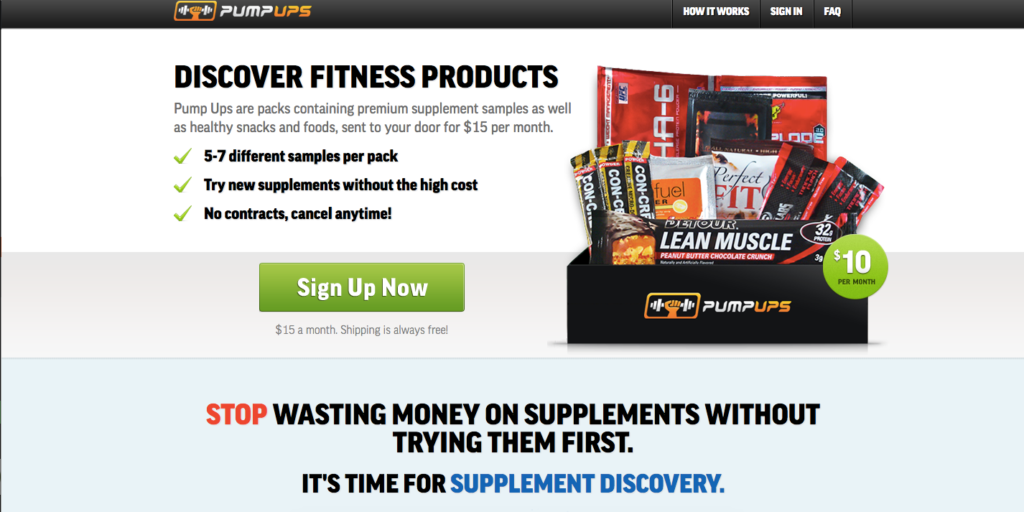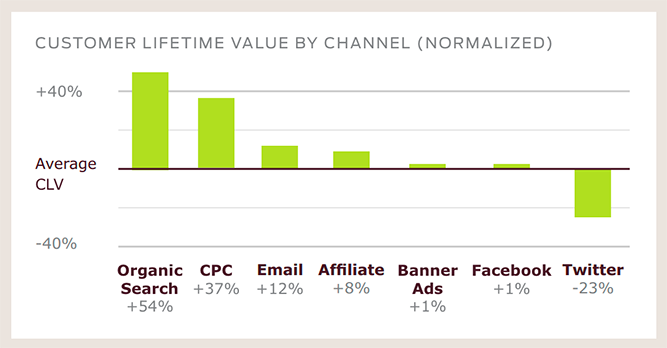When you start working on a new idea, it’s always a ton of fun.
You’ve got a clean slate, nothing to hold you back and you’re free to pursue any bold idea you can dream up. This freedom fuels your passion and drives you to make your dreams a reality.
Your brain helps with something called confirmation bias. That means that you look for facts that match your ideas or plans and ignore the ones that don’t.
This is a double-edged sword.
On one hand, you absolutely need to be a bit naive about your ideas. But if you take it to far, you end up lying to yourself about the actual potential or progress of the idea you’re working on.
I have been there too many times. I get a good idea, push aside what I’m working on, dive into the new project head first and emerge a couple of months later without much to show for.
In the beginning, I only had my own time to waste. But when one of my businesses started to generate cash, I started to invest some of that money. And that’s when the lessons started to get really expensive.
This post describes how I struggled to launch Nutrinos, a fitness subscription box a couple of years ago. I go into what went wrong, how I fooled myself and why I’ve kept this business alive to this day.
You’ll be able to use the lessons in this post to stress test your own ecommerce business and make it stronger because of it.
How To Spot The Lies You’re Telling Yourself
Some people start online stores because they have a specific product they want to sell. Others don’t really care what they sell, they just want to make money.
In either case, you’re starting from your products and then try to find an audience for the products you’re selling, which may or may not exist.
When people take this approach, the resulting store often is very similar to other stores selling similar products (or exactly the same products straight from a dropshipping catalog), without any differentiation.

This lack of differentiation will also make it harder for you to attract visitors to your site. If you don’t have a unique angle, why should anyone bother to visit your store? Let alone buy something.
The Lean Startup is a good approach that can help solve this problem because it starts the other way around:
- Identify your audience
- Unearth their problems/needs/wants
- Find products that match the above
You might end up in the same place as with the first approach. But going through this process forces you to take a critical look at parts of your plan that are less solid, giving you a better chance of succeeding.
This approach isn’t just for Silicon Valley Whiz Kids. If you’re building an online store you can definitely use it.
The two major challenges you’ll face in ecommerce are:
- Product/market fit: meaning that your potential customers actually want products you’re planning to sell
- Customer acquisition: you’re able to get these customers to your store and convert them at the right cost and scale
Making sure you’ve tackled both areas (or at least product /market fit) before you move on to work on the other parts of your business is essential.
This sounds very straightforward in theory. But it’s super hard to do.
At every step, a little voice inside of you will tell you: “You know your idea is a winner, so you don’t really need to do all this extra work, just move forward to the REAL business stuff and build that rocket ship!”
But at this point in time, the real business stuff is taking a disciplined approach to figure out what’s real, no matter what your mind says.
Let’s take a look at the fitness subscription box I wanted to launch a couple of years ago.
I really liked the subscription ecommerce business model. And after hearing an interview with someone that ran a successful fitness subscription box in the US, I decided I was going to copy it in Belgium.

My initial idea was to create a monthly box of fitness supplement samples for athletes. I would get the samples for free or at low cost and would charge for the subscription. Revenue would come from both the subscription fees and from subscribers purchasing of full-size products.
Finding product/market fit
Product/market fit is the stage at which it is clear that customers “get it”. They prefer your store over that of your competitors and they buy without any need to hard sell (or chase them with ads).
You’ll know when you’ve hit that point by learning more about your potential customers and the products you’re want to sell.
Market
I was part of my own market, which made research a lot easier. I was taking a lot of supplements as part of my workouts. (For those wondering, these are things like energy bars or protein shakes, not steroids or any other illegal stuff.)
These supplements help to train harder and recover faster after exercising.

I started talking to everyone in my own gym and at competitions. I knew that people used these supplements and spent a lot of money on them. Online I started interacting on a couple of fora and did a couple of surveys to learn more.
From all this research I learned that many athletes were always looking for new products and flavours to try out.
So the big question mark became whether these customers wanted to buy a subscription for a monthly box filled with samples of these products.
The Power And Danger of Subscription Ecommerce
A subscription business delivers recurring revenue which makes your own business a lot more predictable. This is great because it allows you to balance revenue and costs better.
But recurring revenue is also really seductive. It can convince you to build a company that’s amazing for you but not necessarily for your customers. And like I said before, one of the challenges in a new business is to not believe (too much) in your own bullshit.
This makes it harder to make good decisions.
Subscription models are good for customers when it saves them time or makes it more convenient.
But the truth is that a lot of companies simply combine a product with a subscription model, without examining if customers actually need this as a subscription.
Socks, underwear, dress shirts, pet toys, beauty products, washing powder or fitness supplement samples As A Service.
If the product category isn’t a great fit for a subscription model, you’ll face a high customer acquisition cost and a high churn rate. This is a very tough combination to grow a business.
Jameson Morris, founder of a subscription box for yogis said it well:
The most successful subscriptions fulfill real needs. Gimmicks aren’t sustainable.
I didn’t get far enough in the business to discover if my business model was sustainable. But looking at this niche a couple of years later, almost none of the players are still in business. So I probably would have faced these same challenges.
One way I could have tested it was to find 10 people to pay me for a box, and see how they reacted when a new month rolled around.
Product
The reason I didn’t get round to launching the first box was that I couldn’t find the right products.
I figured that getting customers right would be the biggest challenge, so that’s where I focused a lot of my energy.
But when I started contacting manufacturers of those supplements to learn about the supply side I wasn’t getting through. None of my emails or calls got any quality replies.
Luckily Europe’s biggest fitness expo took place around that time. All the big brands would be there with most of their sales and marketing staff, an ideal moment to get hold of them.
But going there was a pretty sobering experience.
I got a no at every booth I approached. Some of them liked the idea, but even with the most positive interactions took a wait and see approach.
Most of them simply worked through exclusive distributors which took care of all the marketing efforts. These efforts almost never included samples. So having to change their whole marketing approach to help out my non-existent business was too big of an ask.
While it seems like a good idea, relying on these samples has downsides when the business scales says Jameson from Yogisurprise:
Once you begin to scale (past 3,000 or so customers) it gets harder and harder to not only procure enough product to fulfill your boxes (at least without 100 variations), but also to provide enough value back to your vendors that they continue to sample with you. Even worse, it’s extremely difficult to pivot your pricing model without serious churn. If you’re insistent on building a sample marketing business, choose a niche where the products have massive margins and cost cents on the dollar to make (like the beauty industry) and come up with a strong strategy that keeps your sample vendors coming back every quarter.
I found a few brands that did give out samples, but nowhere near the 10-12 I would need every month to fill up a box.
Not being able to source the right products for even the first box was clearly a deathblow for the idea in that specific form.
But the market was still was hungry to discover and try new products, so I should have made some tweaks to the idea and search for the product/market fit of that new idea.
But before I realized this, I was already working on the next part of my business: testing was I could find customers profitably.
I shouldn’t have moved on to this part, but I did anyway.
Finding your customer acquisition channel

Only when you’ve found product/market fit, you’re ready to move on and make your business grow.
Figuring out whether you can bring people to your store and if you can convert them profitably requires both a lot of time and money.
So if you’re working on this before you’ve made sure your fundamentals are good, there is a chance that all your efforts are useless.
This is exactly what happened with my subscription box.
I convinced myself with the following line: it takes a while for marketing efforts to gain momentum. So if I start early my marketing machine will be up and running by the time I have my first box ready.
There is nothing wrong with building up an audience before you launch. Beardbrand used this approach pretty successfully to launch their men grooming products.
The key is to use this community as beta testers for your concept, approach, product selection or pricing.
I wasn’t doing that. I was already doing really tactical things like figuring out different Facebook ads and hiring a copywriter to write articles so my site would come up for the relevant search.
Too Much, Too Soon
This was way too much, too soon for an unproven business.
One reason I was moving ahead blindly, is that I was happy to spend this money.
That might sound weird but up until that point, the only business I had been involved in was a services business. This type of business can be pretty lucrative but it doesn’t scale beyond the time you put in.
This was the first time I realized the power of leverage. I could trade money to build assets that would last and continue to generate value.
It’s clear now that I shouldn’t have done any of this. Beyond building up a group of potential customers, it was a pure distraction.
If you have validated the underlying assumptions of your business, you are ready to move ahead.
The Bullseye Framework
To figure out which marketing channel to go for I always refer to the Bullseye Framework from the Traction book.
It describes the following stages:
- Brainstorm
Try to come up with as many ways to get new customers as possible. Coming up with the obvious ones like Facebook ads or email marketing will be easy.
But do try to go beyond and come up with a couple of crazy ones. They will help get your creative juices flowing and raise the quality of your other ideas!
For my failed ecommerce idea I ignored this step and skipped straight to the marketing channels I knew best: organic search and PPC advertising.
While it makes sense to use your strengths, it’s really important to consider a wide variety of ideas.
- Evaluate
Once you’ve got a long list of ideas, work your way through all of them and evaluate their potential on these 3 criteria:
- Skill: do you have the skills, can you learn them or can you hire to test this channel?
- Sales: can this channel deliver you sales? Some are great at bringing visitors, but for your business to grow you’ll need sales.
- Customers: can you reach your potential customers through this channel? It doesn’t matter that you’re really good at Snapchat, if you’re selling to baby boomers, you simply can’t reach them via that channel.
- Prioritize
After that evaluation, you’ll probably end up with a couple of candidates. Pick 2-3 channels and put out small scale tests to test their potential.
- Focus
If from these early tests one channel clearly brings you the results you need, double down and focus your efforts on this one.
You only need one marketing channel that works at this point in time. So don’t worry too much about whether it’s future proof or if it will still work when you’re store gets to the next level. Just execute on what works right now.
If no channel stands out, go back through the whole process and try something new.
The final pivot
When I realized I couldn’t make the subscription box work I started thinking of where I could take the business. I didn’t really consider all possible alternatives, because I had spent a lot on creating content.
I explored the idea to make a normal ecommerce store that sold full-size fitness supplements. But there was already a lot of competition doing exactly that and I felt I couldn’t add anything special to the market.
So, in the end, I cut my losses and I spun off the idea as an affiliate site.
Today the site is still up and running, making a pittance in affiliate revenue. I know I should kill it and close the chapter, but I keep it alive as a reminder for the lessons I’ve described here.
Now that you heard my story I’m curious about yours:
Which facts or slid advice have you ignored? How did that work out?
